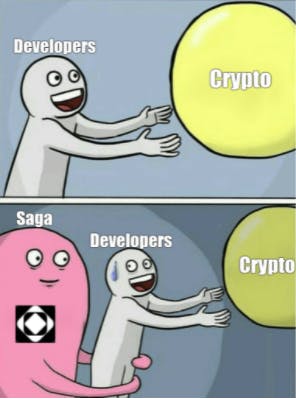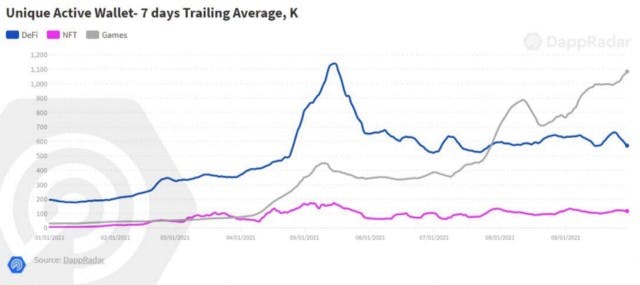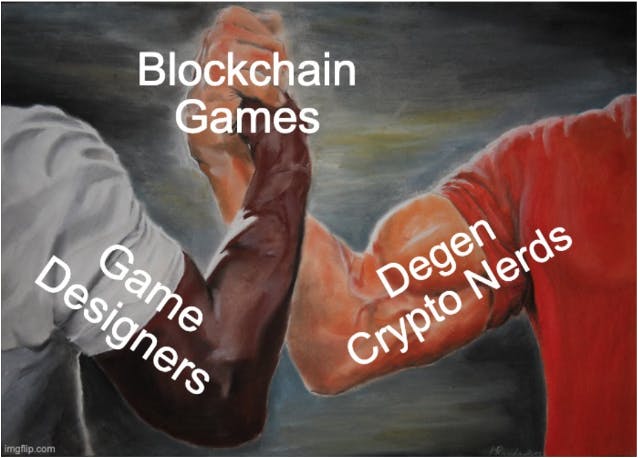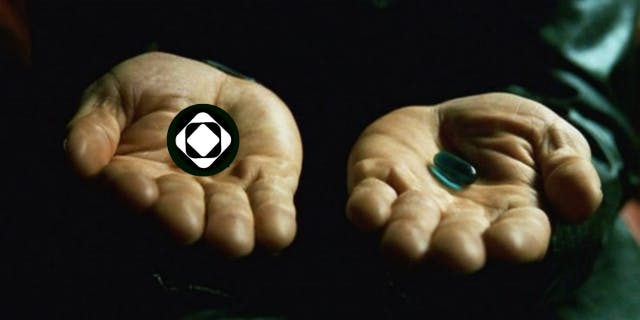The Many Sagas of the Gaming Revolution
“Anything scarce will ultimately be tokenized because the benefits of digitization and increased liquidity are so great.” - Balaji Srinivasan
Introduction
Ever since the advent of Spacewar! in 1963, gaming has grown from a niche interest to a $140 billion global industry that includes over 3 billion gamers worldwide. Over the last 60 years, the gaming industry has implemented a variety of business models. Pay-to-play(P2P) — also known as Buy-to-Play — was the dominant model throughout the 70s and 80s where gamers pay an upfront cost. With the rise of the internet and mobile gaming in the 90s and 2000s, Free-to-Play (F2P) became popular because it replaced upfront costs with microtransactions, ads, and purchase of in-game assets as revenue sources.
As web3 technology proliferates into the 2020s, there are new opportunities to disrupt these old business models. Blockchain games have adopted a Play-to-Earn (P2E) model, embracing true digital ownership of gaming assets and in-game currencies while creating incentive alignment between game developers and their customers. Let’s dive into the history of gaming and how Saga is building a platform for the next generation of gaming applications.

Source: Finitosssss#5503 on Saga Discord Server
Business Model Evolution in Gaming
Pay-to-Play is a model that almost every gamer has come across in some form. Arcades popularized a model where customers insert coins to play games. Early video game consoles like Sega, Nintendo and Atari brought gaming to the household. In the PC era of the 2000s, games like Call of Duty(CoD) or World of Warcraft(WoW) enabled gamers to participate in massive multiplayer online gaming (MMO) with a monthly subscription fee.

While P2P was profitable, the late 90s saw the advent of F2P games, which allowed gamers to start playing without any upfront cost. F2P games earned revenue via ads, microtransactions, or the purchase of in-game assets. The F2P model made gaming more accessible to players and helped usher in a huge influx of new players into games. Games like Counter-Strike: Global Offensive (CS:GO) nearly doubled the number of monthly active users (MAU) after converting from a P2P to F2P model in 2018. Fortnite, a game which was F2P from the start, drew in nearly 5x more gamers than CS:GO and popularized battle-royale gameplay where 100 players battled to be the last person standing.
F2P models have found tremendous success over the last decade, but many gamers complain that monetization methods feel exploitative, a sentiment also shared by many gaming executives. Brett Seyler, founder of Forte Labs puts it best:
“Over the course of its 10+ year history in the West, and 15+ year history worldwide, free-to-play game economies and their operations have become increasingly sophisticated and a daunting effort for even the best-resourced projects in the industry. This dramatic increase in sophistication and complexity has led to something of an efficiency plateau, where design has grown stagnant, growth has started to slow, and the industry overall has needed to consolidate. Free-to-play games have come a long way, but incremental improvements to design and economic models are yielding diminishing returns for developers. At the same time, players feel an increasing dissonance with their real world intuitions about transacting for value in these games, and directing their own effort and choices in game economies.”
Dawn of Web3 Business Models in Gaming
While many web2 gaming monetization models have felt exploitative, web3 opens up new possibilities. Web3 enables digital ownership across a game’s ecosystem via tokenization. In-game currencies can be exchanged for stablecoins and other cryptocurrencies. Unique in-game assets can be tokenized via NFTs. Governance tokens can be shared amongst game developers, gamers, platforms and infrastructure providers to distribute ownership across all stakeholders. The alignment of game developers to their customers and community via shared digital ownership opens the door to many new possibilities. As can be seen in the explosive growth of gaming assets in crypto wallets in 2021–outstripping even DeFi and NFTs–gamers like the model.

The first blockchain game that utilized tokenization and found early success on Ethereum was CryptoKitties. Each CryptoKitty that is tokenized into an NFT can be purchased, traded or bred to make new CryptoKitties. While the game’s popularity led to some CryptoKitties selling for hundreds of thousands of dollars, it also resulted in serious congestion on Ethereum — at one point accounting for 25% of network traffic. Congestion led to high-gas fees, which made it economically difficult for new players to get started in the game. Limits in technology and blockspace also introduced restrictions on what was possible with the game and ultimately failed to keep players engaged. The lack of new players, a supply overhang due to excessive breeding and limited blockspace on a monolithic chain led to the game’s downfall just a few years after its inception.

Sky Mavis, a crypto-gaming company formed by former CryptoKitty players, set out to build the next great crypto game named Axie Infinity. Axie Infinity is a Pokemon-like game where gamers collect, raise, breed and battle digital pets called “Axies”. Sky Mavis started to investigate scaling solutions to address the congestion and gas issues that plagued CryptoKitties in 2017. Sky Mavis originally partnered with Loom network to build a scaling solution. But after Loom decided to optimize their network for enterprise solutions in early 2020, Sky Mavis set out to build their own custom scaling solution. A year later, they released Ronin: an application-specific layer-2 blockchain built especially for Axie Infinity. Ronin enables near-instant finality on transactions, increased throughput, reduced gas fees, a specially-made wallet solution and custom bridge to Ethereum. As many in-game assets start the migration from Ethereum to Ronin in February 2021, the number of Monthly Active Users jumped from less than 700,000 in January 2021 to over 2.5MM by the start of 2022. During that same time, the market-cap of $AXS jumped nearly 200x, from less than $33MM to over $6BB.
Having an application-specific blockchain with cheap, dedicated blockspace was certainly a game changer for the Axie ecosystem. It is clear that the gold standard for web3 games is application-specific chains. While Ronin has greatly improved gameplay and allowed Axie Infinity to scale to unprecedented heights, it hasn’t been without issues. In March 2022, hackers were able to steal $600 million from the Ronin treasury. The hacker obtained 5 of the 9 private keys for the validators that run the Ronin network and drained the funds back to Ethereum. While Axie Infinity is showing signs of recovering and attempting to return user funds, it points to larger issues:
- Building an application-specific blockchain takes time
- Creating a secure, decentralized blockchain is difficult
- Constructing a custom trust-minimized bridge is onerous
Saga, the Platform for Game Developers
The Saga protocol has much to offer the web3 gaming space. Because of the unique ability to handle high volume and low value transactions, which allows for a smooth gamer experience, application-specific chains are the ideal architecture for web3 games. Only, they are historically hard to spin up, maintain and scale. Saga makes this architecture accessible for all game developers. The protocol features:
- Automated deployment of a single tenant VM onto a dedicated chain (or chainlet), which is secured through interchain security by the same set of validators that underlie the Saga mainnet
- No upfront cost to launching a chainlet
- Predictable developer pricing for gas fees
- Dedicated blockspace for a developer’s applications, ensuring high throughput, no dependencies on other applications using Saga, easy upgradability and congestion relief
In other words, Saga allows developers to easily obtain their own permissionless blockspace while completely abstracting away the security layer. The process of deploying onto a chainlet will be as simple and standardized as deploying a smart contract onto a monolithic chain, with all the benefits of having a dedicated chain.
Saga’s unique token model also gives developers ultimate flexibility over fees so they can pursue more optimal business models in web3. Unlike most other Layer 1 protocols where transaction fees must be paid via the underlying chain’s native token, Saga has no such requirement. A game developer could choose to pass on blockchain security costs to end users or pay the security costs themselves and ensure that transactions are always free while pursuing other sources of monetization. In addition, should a game see so much traffic that the cost of maintaining its underlying chainlet starts to soar, Saga’s easy ability to spin up more chainlets for that same game allows for congestion relief and cost control.
Finally, because Saga is built on the Cosmos SDK and Tendermint Core, it will also feature IBC. This allows for the safe transferability of in-game assets between chains, including those outside of the Saga ecosystem. IBC can connect gaming chainlets to: NFT marketplaces like Stargaze, decentralized exchanges like Osmosis or Cresent, or even other gaming chainlets to create an interoperable metaverse.
Conclusion
Given the success of Axie Infinity and other Web3 games like Gods Unchained, The Sandbox or Star Atlas, one might be tempted to think: tokenized assets + game = automatic billion dollar market-cap, right? That is not quite the case — tokenizing gaming assets is only one piece of a successful game. As Rex St. John, incoming Head of Developer Relations at Saga and veteran at NVIDIA, Arm and Intel, puts it:
“Designing a great game is difficult. It often takes game designers years to hone their craft in order to create a game that is entertaining, rewarding, and keeps gamers coming back for more. In order for blockchain games to be successful, there will need to be a tighter collaboration between successful game designers and blockchain experts to produce truly great results.”

To make a successful web3 game, developers must first design a good game. The underlying business model is a factor in that design, and the more developer and end-user centric that model is, the more the developer can focus on the game itself.
That is the thesis on which Saga is built. We believe that within the Cosmos, a truly interoperable, vibrant multiverse is possible.
P2P. F2P. P2E. Monolithic blockchains. Side-chains. Application-specific blockchains. If your head’s spinning, it’s because the future of blockchain gaming has yet to be written. The one question that remains is this: will you help us write the next Saga? Join us: open Saga roles, Discord, and Telegram.

Source: nikenikitos9#6603 on Saga Discord Server
Great Articles to Read
[1] https://messari.io/article/explain-it-like-i-m-5-gamefi
[2] https://messari.io/article/blockchains-changing-the-game?referrer=author:jerry-sun
[4] https://metaversed.net/into-the-void
[5] https://messari.io/article/yield-guild-games-the-ally-of-gamers